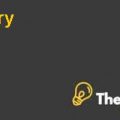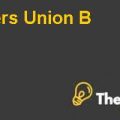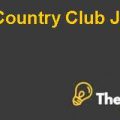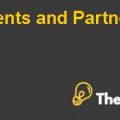Background
Lego Group was incorporated in 1932. After its incorporation, thecompany used to produce and sell wooden products under the brand name of ‘Lego’. In 1960, a fire destroyed the wooden warehouse of the company.After this incident, thecompany moved towards manufacturing plastic products. The company thenused to sell traditional toys which were popular among the children.
After its expansion in the market,severe problems arose in the Lego Group.To overcome these problems, company shifted from traditional toys to digital and educational products along with this, company also extended its targeted customer and now it targets younger children, girls, and parents.
Key problem/Issues
The company faces many issues some of them are following:
The management of the company were unable to control the cost of raw material.They were ineffective in monitoring the inventory which increased the cost of the products and hence the profitability of the company was jeopardized.
The other problem which the company faces is relating to demand estimation. The company does not estimate the demand for its products and hence,itproduces more products than the demand which increases the obsolescence rate of the company. Due to this obsolescence the expenses (write-off) of the company increased which caused further reduction in the profitability of the company.
Lego Group Harvard Case Solution & Analysis
Furthermore, as the company manufactures traditional toys, therefore, it does not have expertise in manufacturing digital productsso it is difficult for the company to attract and retain customers’ trust in comparisonto the digital products.
Although Lego Groupchanged its way of trading by updating the technology and gripping the emerging opportunities but after this change, the company does not change its workforce. As this workforce works under the traditional method, therefore it is possible that company may face problems in changing itsenvironment.
The company conducts more of its manufacturing activities in Denmark. This indicates that the company is highly dependent on Denmark suppliers therefore, if the supplies become short in Denmark then company will suffer a lot.
Furthermore, the company engages itself in many activities which deviates it from itscore business. As it doesn’t have expertise in non-core activities, therefore, this further jeopardizes the profitability of the company.
External Analysis
General Environment
The general environment of the company can be analyzed using PEST model. Lego Group mainly operates in European countriesandin these countriesthere are strict regulations onthe toys market.Companies have to ascertain that they do not use Phthalates in the process of developing products along with this, they have to take care of the products which theymanufacturefor children. Moreover, as Lego Group operates in theinternationalmarket, therefore,it has to bear many consequences which may arise due to the conflict between different countries.(Beh, 2017)
The other factors which can affect the company are economic, social and technologic factors. Lego Group operates internationally, therefore, changes in foreign rates, tariffs and tax rate can affect adversely to the company. Furthermore, the needs of today’s children are all different from the past.They need highly technical and challenging games, therefore, the technological and social effect can also adversely affect the company...............
This is just a sample partial work. Please place the order on the website to get your own originally done case solution.










